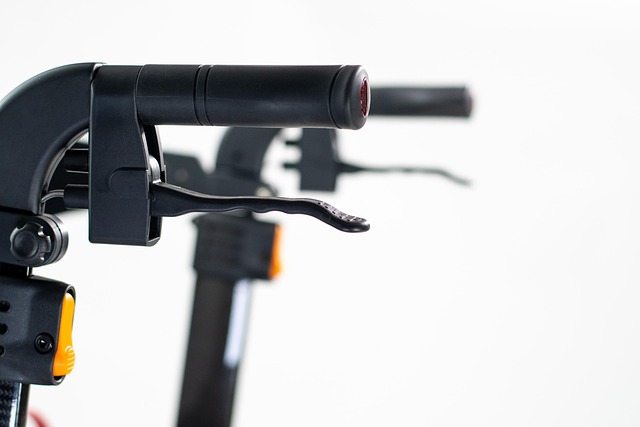Rollator Repairs and Maintenance: Maintaining Your Rollator’s Performance

Image Source: Pexels
Introduction to rollators and their importance
Rollators are an essential mobility aid for those who require additional support and stability while walking. These four-wheeled walking aids provide independence and freedom of movement to individuals with mobility challenges. Whether you rely on a rollator due to age, injury, or a disability, it is crucial to understand the importance of regular maintenance and rollator repairs to ensure its optimal performance and longevity. By following a few simple tips and techniques, you can keep your rollator in excellent condition and avoid potential accidents or inconveniences.
Understanding the need for regular maintenance and repairs
Regular maintenance and repairs are vital to ensuring the safety and functionality of your rollator. Over time, wear and tear can occur, affecting the performance of various components such as the wheels, brakes, and frame. Failure to address these issues promptly may lead to difficulty maneuvering the rollator, instability, or even potential accidents. By incorporating a maintenance routine into your schedule, you can identify and resolve any problems before they escalate. Additionally, regular maintenance can prolong the lifespan of your rollator, saving you money in the long run.
Common rollator problems and how to diagnose them
Before delving into the intricacies of rollator repairs, it is essential to familiarize yourself with common problems that may arise. By understanding the symptoms, you can diagnose the issue accurately and determine the appropriate course of action. Some common rollator problems include squeaky wheels, malfunctioning brakes, loose or wobbly handles, and worn-out seat fabric. If you notice any of these issues or experience any other difficulties while using your rollator, it is crucial to address them promptly to ensure your safety and comfort.
To diagnose and troubleshoot rollator problems, start by inspecting each component individually. Check the wheels for any debris or damage that may cause them to squeak or not roll smoothly. Examine the brakes to ensure they engage and disengage properly, without any excessive tension or looseness. Test the handles by gripping them firmly and checking for any wobbling or instability. Lastly, inspect the seat fabric for any tears or signs of wear. By conducting this visual inspection, you can identify the root cause of the problem and determine the necessary repairs or replacements.
Essential tools and supplies for rollator repairs
To effectively repair and maintain your rollator, it is essential to have the right tools and supplies on hand. Here are some essential items you should consider adding to your rollator repair kit:
- Screwdriver set: A set of different-sized screwdrivers will come in handy for tightening or loosening screws on various parts of the rollator.
- Adjustable wrench: An adjustable wrench allows you to tighten or loosen nuts and bolts of different sizes.
- Allen wrench set: Allen wrenches, also known as hex keys, are essential for adjusting and tightening screws with hexagonal sockets, often found on rollator frames and handles.
- Lubricant: A silicone-based lubricant can help reduce friction and ensure smooth movement of the wheels and other moving parts.
- Replacement parts: It is advisable to keep a small stock of commonly replaced parts, such as wheels, brakes, and seat fabric, in case of emergencies or quick repairs.
By having these tools and supplies readily available, you can tackle most rollator repairs and maintenance tasks with ease.
Step-by-step guide to basic rollator maintenance
Regular maintenance is an essential part of keeping your rollator in excellent condition. Here is a step-by-step guide to basic rollator maintenance:
- Cleaning: Start by removing any dust, dirt, or debris from the rollator using a soft cloth or brush. Pay close attention to the wheels, brakes, and frame, as these areas are more prone to accumulating dirt.
- Wheel inspection: Check the wheels for any signs of damage or excessive wear. Replace any worn-out wheels to ensure smooth and safe operation.
- Brake adjustment: Test the brakes to ensure they engage and disengage properly. If the brakes are not functioning correctly, consult your rollator’s user manual for instructions on adjusting the brake tension.
- Handle inspection: Examine the handles for any signs of looseness or instability. Tighten any loose screws or bolts to ensure a secure grip.
- Lubrication: Apply a small amount of silicone-based lubricant to the wheels and other moving parts, such as hinges or joints, to reduce friction and ensure smooth movement.
- Seat fabric maintenance: If your rollator has a seat, inspect the fabric for any tears or signs of wear. Replace the seat fabric if necessary to maintain comfort and safety.
By following these simple maintenance steps regularly, you can keep your rollator in optimal condition and minimize the risk of any potential issues.
Troubleshooting tips for common rollator issues
Despite regular maintenance, rollators may encounter common issues that require troubleshooting. Here are some troubleshooting tips for common rollator problems:
- Squeaky wheels: If your rollator’s wheels are squeaking, try cleaning them thoroughly and applying a silicone-based lubricant. If the issue persists, you may need to replace the wheels.
- Malfunctioning brakes: If the brakes are not engaging or disengaging properly, check if there is any dirt or debris preventing them from functioning correctly. Clean the brakes and adjust the tension if necessary. If the problem persists, consult a professional for further assistance.
- Loose or wobbly handles: Tighten any loose screws or bolts on the handles to eliminate wobbling or instability. If the problem persists, consider replacing the handles or consulting a professional for a more thorough inspection.
- Worn-out seat fabric: If the seat fabric is torn or worn out, replace it with a new one to maintain comfort and safety. Refer to your rollator’s user manual for instructions on replacing the seat fabric.
Remember to consult your rollator’s user manual for specific troubleshooting instructions and guidelines. If you are unsure or unable to resolve the issue on your own, it is advisable to seek professional help.
Advanced rollator repairs and when to seek professional help
While basic rollator maintenance and repairs can be done at home, some issues may require advanced repairs or professional assistance. If you encounter any of the following problems, it is recommended to seek professional help:
- Structural damage: If your rollator has significant structural damage, such as a bent frame or broken welds, it is crucial to consult a professional for assessment and repair.
- Motor or electronic issues: If you have a motorized or electronic rollator and experience any issues with its operation, it is best to contact the manufacturer or an authorized repair center for assistance.
- Complex brake issues: If you are unable to troubleshoot or resolve brake issues, especially with complex braking systems, it is advisable to seek professional help to ensure the safety and functionality of your rollator.
Remember, the safety and performance of your rollator should always be the top priority. If you are unsure about handling advanced repairs or encounter complex issues, it is best to consult a professional for guidance and assistance.
How to extend the lifespan of your rollator through proper care
Proper care and maintenance can significantly extend the lifespan of your rollator. Here are some additional tips to help you maximize the durability and performance of your rollator:
- Store it properly: When not in use, store your rollator in a clean and dry area to prevent exposure to moisture or extreme temperatures. Avoid storing it in direct sunlight, as this can cause damage to the frame or fabric.
- Regularly check for loose screws or bolts: Conduct periodic inspections to ensure all screws and bolts are securely tightened. Loose components can lead to instability and potential accidents.
- Avoid overloading: Adhere to the weight capacity specified by the manufacturer to prevent excessive strain on the rollator’s components. Overloading the rollator can cause premature wear and damage.
- Clean and sanitize: Regularly clean the rollator to remove dirt, bacteria, and other contaminants. Use mild soap and water to clean the frame, wheels, and handles. Avoid using harsh chemicals that may damage the rollator.
- Be mindful of terrain: When using your rollator outdoors, be cautious of uneven terrain, curbs, or steep slopes. Rough surfaces can put additional stress on the wheels and frame, leading to faster wear and tear.
By following these care tips, you can ensure the longevity and performance of your rollator, providing you with a reliable mobility aid for years to come.
Resources and websites for rollator repair tutorials and guides
In case you require additional guidance or information on rollator repairs, several online resources and websites offer tutorials and guides. Here are a few reliable sources to explore:
- Rollator Repair YouTube Channel: This YouTube channel provides informative videos on rollator repairs and maintenance techniques.
- Rollator Repair Forum: Join online forums dedicated to rollator repairs, where you can ask questions, seek advice, and learn from experienced individuals in the community.
- Manufacturer’s website: Visit the manufacturer’s website for your specific rollator model. Often, they provide user manuals, troubleshooting guides, and even video tutorials for repairs and maintenance.
- Online mobility aid retailers: Some online retailers specializing in mobility aids offer comprehensive guides and resources on rollator repairs and maintenance.
Remember to cross-reference the information you find online and consult your rollator’s user manual for accurate and model-specific instructions.
Conclusion and final thoughts on maintaining rollator performance
Regular maintenance and repairs are essential for maintaining the performance and functionality of your rollator. By incorporating a maintenance routine into your schedule, you can identify and address any issues promptly, ensuring your safety and comfort. Remember to conduct regular inspections, use the appropriate tools and supplies, and seek professional help when needed. By following these essential tips and techniques, you can extend the lifespan of your rollator, allowing you to navigate the world with confidence and independence.
Take control of your rollator’s performance today by implementing these essential tips for repairs and maintenance. Your safety and comfort should always be a priority, and regular maintenance plays a crucial role in ensuring the longevity and reliability of your rollator. Don’t wait until an issue arises – start your rollator maintenance routine now and enjoy peace of mind as you move with ease.



